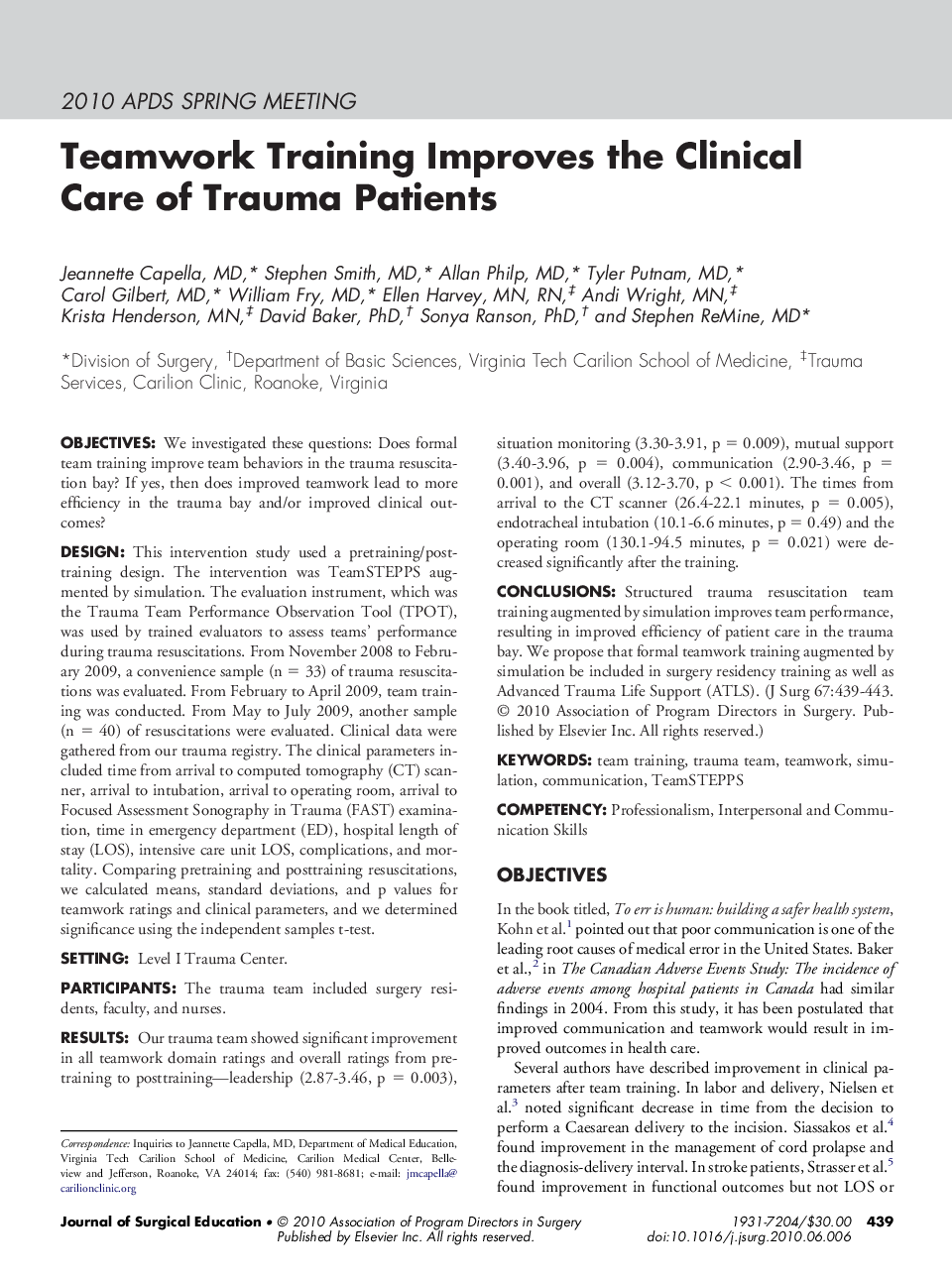| کد مقاله | کد نشریه | سال انتشار | مقاله انگلیسی | نسخه تمام متن |
|---|---|---|---|---|
| 4298439 | 1288354 | 2010 | 5 صفحه PDF | دانلود رایگان |

ObjectivesWe investigated these questions: Does formal team training improve team behaviors in the trauma resuscitation bay? If yes, then does improved teamwork lead to more efficiency in the trauma bay and/or improved clinical outcomes?DesignThis intervention study used a pretraining/posttraining design. The intervention was TeamSTEPPS augmented by simulation. The evaluation instrument, which was the Trauma Team Performance Observation Tool (TPOT), was used by trained evaluators to assess teams' performance during trauma resuscitations. From November 2008 to February 2009, a convenience sample (n = 33) of trauma resuscitations was evaluated. From February to April 2009, team training was conducted. From May to July 2009, another sample (n = 40) of resuscitations were evaluated. Clinical data were gathered from our trauma registry. The clinical parameters included time from arrival to computed tomography (CT) scanner, arrival to intubation, arrival to operating room, arrival to Focused Assessment Sonography in Trauma (FAST) examination, time in emergency department (ED), hospital length of stay (LOS), intensive care unit LOS, complications, and mortality. Comparing pretraining and posttraining resuscitations, we calculated means, standard deviations, and p values for teamwork ratings and clinical parameters, and we determined significance using the independent samples t-test.SettingLevel I Trauma Center.ParticipantsThe trauma team included surgery residents, faculty, and nurses.ResultsOur trauma team showed significant improvement in all teamwork domain ratings and overall ratings from pretraining to posttraining—leadership (2.87-3.46, p = 0.003), situation monitoring (3.30-3.91, p = 0.009), mutual support (3.40-3.96, p = 0.004), communication (2.90-3.46, p = 0.001), and overall (3.12-3.70, p < 0.001). The times from arrival to the CT scanner (26.4-22.1 minutes, p = 0.005), endotracheal intubation (10.1-6.6 minutes, p = 0.49) and the operating room (130.1-94.5 minutes, p = 0.021) were decreased significantly after the training.ConclusionsStructured trauma resuscitation team training augmented by simulation improves team performance, resulting in improved efficiency of patient care in the trauma bay. We propose that formal teamwork training augmented by simulation be included in surgery residency training as well as Advanced Trauma Life Support (ATLS).
Journal: Journal of Surgical Education - Volume 67, Issue 6, November–December 2010, Pages 439–443